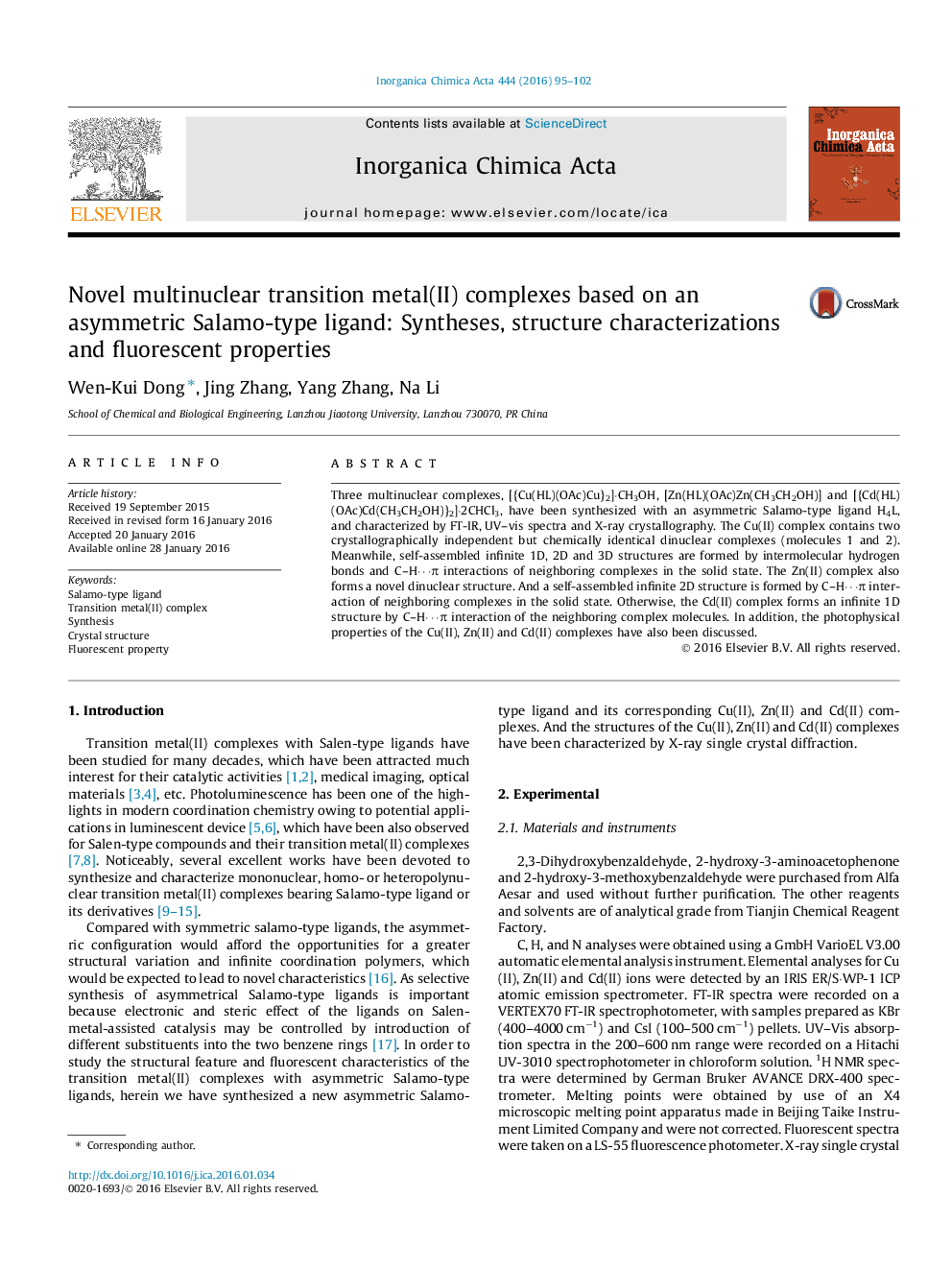| Article ID | Journal | Published Year | Pages | File Type |
|---|---|---|---|---|
| 1312009 | Inorganica Chimica Acta | 2016 | 8 Pages |
•A new asymmetric Salamo-type ligand H4L has been synthesized firstly.•Three novel Cu(II), Zn(II) and Cd(II) complexes have been synthesized and characterized structurally.•The photophysical properties of the Cu(II), Zn(II) and Cd(II) complexes have also been discussed.
Three multinuclear complexes, [{Cu(HL)(OAc)Cu}2]·CH3OH, [Zn(HL)(OAc)Zn(CH3CH2OH)] and [{Cd(HL)(OAc)Cd(CH3CH2OH)}2]·2CHCl3, have been synthesized with an asymmetric Salamo-type ligand H4L, and characterized by FT-IR, UV–vis spectra and X-ray crystallography. The Cu(II) complex contains two crystallographically independent but chemically identical dinuclear complexes (molecules 1 and 2). Meanwhile, self-assembled infinite 1D, 2D and 3D structures are formed by intermolecular hydrogen bonds and C–H⋯π interactions of neighboring complexes in the solid state. The Zn(II) complex also forms a novel dinuclear structure. And a self-assembled infinite 2D structure is formed by C–H⋯π interaction of neighboring complexes in the solid state. Otherwise, the Cd(II) complex forms an infinite 1D structure by C–H⋯π interaction of the neighboring complex molecules. In addition, the photophysical properties of the Cu(II), Zn(II) and Cd(II) complexes have also been discussed.
Graphical abstractAn novel asymmetric Salamo-type ligand H4L and its three novel supramolecular multinuclear Cu(II), Zn(II) and Cd(II) complexes have been synthesized and characterized by FT-IR, UV–vis spectra and X-ray crystallography. The obtained crystal structures are very interesting. In addition, the photophysical properties of the Cu(II), Zn(II) and Cd(II) complexes have also been discussed.Figure optionsDownload full-size imageDownload as PowerPoint slide
